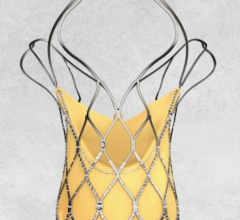December 4, 2007 - In general, drug-eluting stents (DES) achieve better results than bare-metal stents do, U.S. researchers report in the November 20 issue of the Journal of the American College of Cardiology.
"We found that DES, as they are being used in clinical practice in North America, significantly reduce the need for target vessel revascularization compared to bare-metal stents," lead investigator J. Dawn Abbott, M.D., told Reuters Health.
"Importantly," she added, this reduction "was observed in patients with and without complex coronary lesion types."
Dr. Abbott of Rhode Island Hospital, Providence, and colleagues studied data from 2004 for 1460 patients who received at least one DES. These data were compared with earlier records for 1,763 patients who received at least one bare-metal stent.
At one year, the cumulative death and myocardial infarction rate was 7.6 percent in DES patients and 8.7 percent in bare-metal stent patients, a nonsignificant difference. The corresponding rate of target vessel revascularization at one year was 5.0 percent and 9.2 percent (p
In DES patients, the one-year hazard ratio for any repeat vascularization by percutaneous coronary intervention or coronary bypass was 0.38, and the rate of stent thrombosis was 1 percent.
"These improved outcomes," continued Dr. Abbott, "were achieved without any evidence of increased hazard from DES use, as demonstrated by similar one-year rates of death and myocardial infarction, and a very low rate of angiographically confirmed late stent thrombosis."
"While these results certainly confirm the efficacy of DES," she concluded, "we will need longer follow-up to evaluate the incidence of very late stent thrombosis in these patients."
In an accompanying editorial, Franz-Josef Neumann, M.D., Herz-Zentrum, Bad Krozingen, Germany writes that the "mounting evidence on this matter confirms the superior efficacy of DES with respect to the prevention of repeat revascularization and does not suggest inferior safety compared with bare-metal stents."
Ref: J Am Coll Cardiol 2007;50:2029-2038
Source: Reuters Health, December 3, 2007
For more information: www.acc.org


 July 02, 2024
July 02, 2024 








